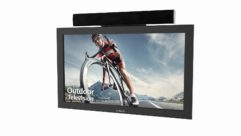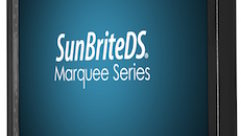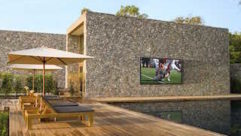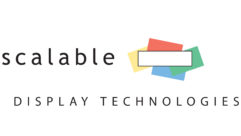
Displays at InfoComm 2004
Jun 21, 2004 7:24 PM
NEC MT1075
By Jeff Sauer
It goes without saying that InfoComm is the annual showcase for bigger, better, and brighter professional AV panels and better, brighter, and smaller projectors. This year was no different, with a plethora of Moore’s Law–type advances and typical specs wars one-upsmanship. Admittedly, if you’re not in the market for a new display product today, the manufacturers’ brightness claims and model numbers can easily run together and be tough to sort out.
Yet this year’s InfoComm seemed a little different. Maybe it’s that manufacturers themselves are getting a little bored with the numbers games, too. But in addition to those claims of a little higher brightness, a little better contrast, and—thankfully, not to be ignored—lower prices, there were several innovations at InfoComm that show the product designers are thinking outside the proverbial box—at least a little.
For example, NEC and Epson both announced new products that start with impressive-enough statistics. NEC’s newest installation projector is the MT1075, boasting 4200 lumens in a 13-pound box at just $5,495, thus hammering away at that average price/lumen measure of value. Epson offered two different classes of new products: the Value Series PowerLite 61 and 81 targeting the educational market (2000 lumens for just a street price of $1,499 for SVGA and $1,799 for XGA) and the conference room–class PowerLite 830p and wireless-capable 835p ($3,699 and 3,899 for XGA and 3000 lumens).
But there’s something else that’s kind of clever. All of these projectors include an integrated light sensor that can detect the distance from the screen and automatically focus the projector. If you think about it, cheap digital cameras have this very functionality so they can take quick point-and-shoot snapshots. So there’s no reason a projector shouldn’t have it, too. In a way, autofocus is similar to the automatic keystone adjustment that is becoming more common in current travel projectors, with a built-in level to detect vertical offset. Both of those features are smart ways to help with fast, painless projector placement and setup.
But the light sensor doesn’t stop there. Achieving accurate color is a lot more difficult for most users than focusing, especially if the projection surface isn’t pure white. To that end, both Epson and NEC also use that light sensor to detect the color of the screen or wall. By effectively doing something akin to a white balance, these projectors can automatically adjust the colors to ensure an accurate image regardless of whether the “screen” is white, an off-white wall, a bone-colored white board, or even an old-fashioned blackboard.
NEC takes this sensor even one step further. By measuring the distance to the screen of the entire 4:3 image rectangle, the MT1075 can perform not just autokeystone correction but also automatic 3D Reform or cornerstone correction. As long as the sensor can find a rectangular border for sizing, it can leverage NEC’s 3D Reform (found in projectors like the HT1100 and GT6000) to display an appropriate 4:3 image from an off-axis projector location. If you’ve ever tried to tug, shim, and prod cornerstone correction software to do the same manually, you’ll quickly appreciate the value. Of course, an install projector, which by definition is likely to be set up by an AV professional and rarely moved, is probably not the most important model for any of these light sensor options. Still, it’s a good testing ground for NEC, and one can only expect this functionality, once proven robust, will make its way into travel projectors where it will be much more useful.
Barco was also thinking creatively when it designed the newly announced iCon H600 projector. First, it’s a 1920-by-1080 high-resolution 16:9 LCD projector with 6000 lumens of brightness that can show wonderfully sharp HD pictures, and that’s pretty special by itself. However, Barco has integrated the iCon with a Pentium 4 processor, Windows XP OS, and software that supports configuration of as many as four video or graphic picture-in-picture windows within the 1920-by-1080 image. In others words, in addition to a lovely large movie, the iCon can also fill, for example, a control room display screen for four full-resolution 720-by-480 video feeds and still have room for a graphical background.
For high resolution of a different kind, no one tops Sony. Although it won’t be a product until some time next year, Sony showed a prototype of a 4096-by-2160 digital cinema projector. Built on Sony’s SXRD version of liquid crystal on silicon (LCoS) technology, this projector achieves almost four times the resolution of high-definition video. While on the one hand this may sound a little like ho-hum bigger, better, faster, it’s a projector that, side by side, makes a typical HD-capable projector look soft.
Samsung’s 80-inch plasma and Sharp’s 45-inch LCD panel are not quite as revolutionary as Sony’s big resolution leap, but they are impressive demonstrations of the potential advance of technology. The same can be said of Christie Digital’s DS+60, a remarkable 6000 lumen (dual lamp, 3000 lumen in single lamp mode) single-chip DLP projector.
In addition, though not debuted at InfoComm (Thomson showed a consumer version at CES in January), InFocus demonstrated its new optical engine, which yields a 61-inch rear-projector that’s just six inches deep. That puts rear projection almost in the same league as flat-panel plasmas and LCDs.
Of course, there were a lot more exciting display products at InfoComm, but here’s one more “innovation”: security has been a serious concern of projector companies for a number of years, particularly in models destined for educational campuses and public display areas like bars, clubs, and for digital signage. Thus far, short of physically tying a projector down, most theft deterrent features have effectively amounted to not allowing a crook to use the projector after it’s been stolen. Panasonic unveiled a new single-chip projector that features a removable and replaceable top panel. Its default top is white, but it could have a logo—Joe’s Bar and Grill, First Presbyterian, or UC-State—in big letters that would certainly be a more visible sign to potential thieves that they might have a hard time selling the unit on the black market.









